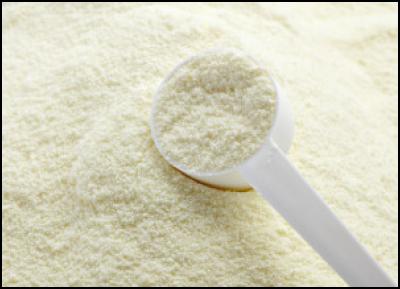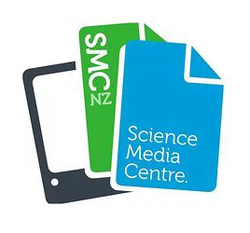Poison powder threat

Scientists stepped up this week to explain the toxicity of 1080 poison as police went public on threats to food supply.
It’s not often that two science related ‘hot-button’ issues collide in the New Zealand media, but this week we saw a doozy in the form of threats to contaminate infant formula with 1080 – milk powder food safety meets predator poison.
The threat was made public on Wednesday at a press conference where police and the Ministry for Primary Industries (MPI) outlined an extortion attempt aiming to stop the use of 1080 for pest control.
According to the authorities, packages containing milk powder contaminated with 1080 poison were sent to Fonterra and Federated Farmers in November last year. Accompanying letters threatened to contaminate infant formula with 1080 unless New Zealand stopped using the toxin for pest control by the end of March.
In the following days the threats have received round the clock coverage with stories covering the criminal, political and financial aspects of the situation. However, the science of 1080 has not been overlooked in reporting.
The risk to humans
Lincoln University Prof Charles Eason explained the poison to Radio New Zealand earlier in the week, acknowledging that 1080 powder might blend easily into milk powder, but would not escape detection:
“There are number of nationally and internationally published methods for testing 1080 in whole range of different materials,” he said. “So the tests obviously have been done in this case... and they can be turned around pretty quickly if required.”
Further details on 1080 as a poison came in the pages of this morning’s Press and Dominion Post, with University of Canterbury toxicologist Prof Ian Shaw penning an article on the issue. He explained how 1080 interrupts the generation of energy in animal and human cells but acknowledged that we know little about human dosages:
“...based on dog studies about 0.4 mg taken by mouth would kill a 5kg infant. This is a very low dose - enough to just about see. Studies in rats, on the other hand, suggest that 0.4mg would harm, but not kill a child," he wrote. "I have introduced this toxicological conjecture to illustrate that we don't know how much 1080 is needed to kill or harm a child, but that the dose is likely to be very low.”
Massey University biosciences lecturer Heather Hendrickson also fronted on the 1080 issue for TV3's Firstline.
Although surprising, idea of using 1080 as a mass poison is not totally unheard of; in 2007 US Medical Toxicologist Chris Holstege noted the potential for the toxin to be misused in his review: ‘Unusual but potential agents of terrorists’.
With the author of the threats still at large, the story continues to unfold. Updates are available on the Government's Food Protection website.
Links to some of the initial coverage can be found on the Science Media Centre website.
Put your director's hat on!
The SMC brings its science animation workshop to Auckland and will head to Christchurch to explore how you can harness short videos to communicate your science.
These free one-day workshops aim to give scientists and science communicators skills to harness off the shelf tools to create short animations and videos showcasing science concepts in innovative, entertaining and informative ways.
Auckland animation workshop April 14 -
APPLY
HERE
Christchurch video workshop
April 15 - APPLY HERE
A
world without tobacco?
Health experts led by NZ researchers have laid down the challenge of a tobacco-free world by 2040, but it won't be easy.
Writing in a major new series inThe Lancet, the experts led by University of Auckland Professors Robert Beaglehole and Ruth Bonita, call on the United Nations to lead a “turbo-charged” effort against the sale and consumption of tobacco.
In a bold move, Beaglehole,
Bonita and their colleagues call for the sale of tobacco to
be phased out by 2040, showing that with sufficient
political support and stronger evidence-based action against
the tobacco industry, a tobacco-free world - where less than
5% of adults use tobacco - could be possible in less than
three decades.
"The time has come for the world to acknowledge the unacceptability of the damage being done by the tobacco industry and work towards a world essentially free from the legal and illegal sale of tobacco products," said Prof Beaglehole in a media release.
The authors of the Lancet article say that amending the WHO'sFramework Convention on Tobacco Control, and accelerating its implementation, would make the goal realistically achievable.
Prof Richard Edwards from the University of Otago, Wellington, welcomed the “visionary and ambitious” goal, telling the SMC that New Zealand could be a leader in the initiative.
“The paper sets out a vision, which if achieved would be one of the great public health triumphs of the 21st century,” Prof Edwards said.
“New Zealand has an opportunity to provide leadership and inspiration. The question is will we do so?"
You can read more expert commentary on the Science Media centre website.
Tariana Turia’s efforts recognised
The Lancet series will be officially launched in Abu Dhabi, United Arab Emirates, at the 2015 World Conference on Tobacco or Health. The conference will also host the Luther L Terry Awardswhere former politician Tariana Turia will receive an award for Outstanding Community Service.
Report slams homeopathy
Australian health authorities have rejected homeopathy as a medical treatment following a review that found no evidence for the alternative therapy.
This week the Australian National Health and Medical Research Council (NHMRC) released an extensive review on the efficacy of homeopathy andissued a firmly worded statement:
"Based on the assessment of the evidence of effectiveness of homeopathy, NHMRC concludes that there are no health conditions for which there is reliable evidence that homeopathy is effective."
The conclusion is based on the findings of a rigorous assessment of more than 1800 papers. Of these, 225 studies met the criteria to be included in NHMRC’s examination of the effectiveness of homeopathy, an alternative therapy based on treating a wide range of illnesses with highly diluted solutions.
The AusSMC held a media briefing with NHMRC panelists on Wednesday. You can listen back to the audio here.
Here in New Zealand, The Society for Science Based Healthcareissued a statement calling on New Zealand pharmacies to "immediately stop promoting and selling homeopathic products in response to this report."
"Consumers should be able to rely on pharmacists and pharmacy sales assistants to only provide reliable healthcare advice and to only promote reliable healthcare products. Until pharmacies stop promoting and selling homeopathic products, this will not be the case."
The report was covered widely in international media such asTIME and the Guardian as well as local outlets New Zealand Herald and Stuff.co.nz.
Quoted:
Stuff.co.nz
"They
may have experienced a beloved animal die in severe pain
from 1080 poisoning – hence the anger towards the
authorities and the desire for revenge"
Massey University forensic psychologist Dr Mei Williams, speculating on the author of the 1080 milk threats.
Policy news &
developments
More resources for kidney disease
patients: The Ministry of Health has announced
that it is developing a new IT resource to help GPs and
nurses better identify and manage patients with chronic
kidney disease.
Extra controls on 1080: The
Government has introduced tighter controls on high purity
forms of 1080 in response to the criminal threat to use 1080
to contaminate infant and other formula.
New from Sciblogs
Some of the highlights from this
week's Sciblogs posts:
Inheriting a ghost chromosome -
Peter Dearden looks at how inheritable information can be
passed on from your mother or father, even if their genes
aren't.
Southern Genes
Chameleons colour changing secret discovered
to be nanotechnology! - Michelle Dickinson gets
excited about new research showing that chameleons change
colour using nano-photonic
crystals.
Nanogirl
The longest decade: the quest for
fusion - Ryan Ridden-Harper explains how
nuclear fusion would create near limitless power yet is
incredibly difficult, making it always "just a decade
away".
Guest Work
Social media and science: the problems and
the challenge - Ken Perrott discusses research
looking at how many anti-scientific or pseudoscientific
ideas are effectively promoted by social media and what
pro-science groups can learn from this.
Open
Parachute
Upcoming
events
Please see the SMC Events Calendar for more events and
details.
• Women in Engineering Leadership Summit 2015 - 17-19 March, Auckland. Professional development event offering networking opportunities, inspirational stories and practical advice from the industry’s established leaders.
•
• The Meihama Model - 18 March,
Christchurch. Assc Prof Suzanne Pitama summarises the
Meihana Model and give tips on integrating this Maori health
framework into clinical practice to support Maori health
gains.
•
• 2015 ASID Scientific Meeting Program
- 18-21 March, Auckland. Australasian meeting
for adult and paediatric infectious disease and clinical
microbiology
specialists.
ends




 NZ Trucking Association: TruckSafe New Zealand Launches | A Game-Changer For Heavy Vehicle Safety And Compliance
NZ Trucking Association: TruckSafe New Zealand Launches | A Game-Changer For Heavy Vehicle Safety And Compliance Gaurav Mittal, IMI: How Can We Balance AI’s Potential And Ethical Challenges?
Gaurav Mittal, IMI: How Can We Balance AI’s Potential And Ethical Challenges? Science Media Centre: Several US-based Environmental Science Databases To Be Taken Down – Expert Reaction
Science Media Centre: Several US-based Environmental Science Databases To Be Taken Down – Expert Reaction Consumer NZ: Despite Low Confidence In Government Efforts, People Want Urgent Action To Lower Grocery Bills
Consumer NZ: Despite Low Confidence In Government Efforts, People Want Urgent Action To Lower Grocery Bills NZ Banking Association: Banks Step Up Customer Scam Protections And Compensation
NZ Banking Association: Banks Step Up Customer Scam Protections And Compensation The Reserve Bank of New Zealand: CoFR Seeking Feedback On Access To Basic Transaction Accounts
The Reserve Bank of New Zealand: CoFR Seeking Feedback On Access To Basic Transaction Accounts



